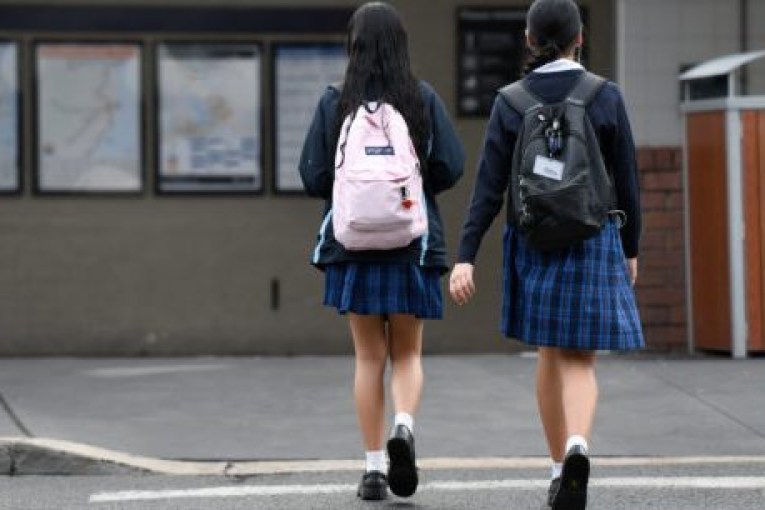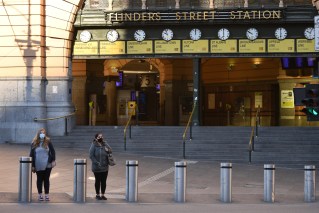It’s been in hibernation for a generation, but can we tame the inflation monster again?
Australians over the age of 50 will be able to tell you horror stories about what happens if interest rates are used too bravely to curb inflation. But lessons learned decades ago don’t necessarily fit today’s problems, writes Shane Rodgers


Ronald Reagan brought the hyperbole but also had the policies to tackle inflation. (Image: Los Angeles Times)
Former US President Ronald Reagan once said that inflation was “as violent as a mugger, as frightening as an armed robber and as deadly as a hit man”.
Reagan, a former Hollywood actor, may have been prone to a bit of hyperbole, but his point is well made. Economies devoid of inflation have a certain order about them. Economies mugged by the inflation “hit man” are scary and unsustainable.
Sadly, Australia is deep inside an inflation and rising interest rate warzone for the first time in a generation.
Given the time interval and lack of recent experience with the problem, it is important that we do not lose sight of the lessons of the late 1980s and 1990s when the inflation monster last escaped from its cage.
As a young economics and industrial relations reporter during that era, a few lessons spring to mind. The first is that lag economic indicators can be dangerous when making decisions today.
During the last inflation round, the then Treasurer Paul Keating was highly critical of the Reserve Bank believing that it had been too slow to trigger higher interest rates to curb 8-9% inflation in the 1980s and way too slow to take them down in the 1990s.
His view is not universally accepted but I can remember at the time speaking to business after business that were being smashed by plummeting demand at a time when the official economic figures (usually with a 3-month lag) were still showing inflationary conditions. In this new round, we need to be very careful to ensure we are reacting to the real state of the economy and not just lag indicators that are already obsolete.
Traditionally one of the most useful early indicators of economic energy has been job vacancies. This time we are seeing high inflation at a time of significant labour and skills shortages. In these conditions, job vacancies may well hold up for quite a while before the economy loses heat.
The other big challenge is managing government spending and wage expectations in this type of environment. During the last inflation crisis, the Hawke-Keating government was committed to a Prices and Incomes Accord with the union movement, which included support for wage indexation (matching wage increases to the prevailing inflation rate).
While this approach was designed to preserve real wages, without a solid productivity gain element it tended to reinforce the damaging wage-price inflation cycle.
Faced with this, the government was forced to negotiate what became known as “wage discounting” (lower wage increases than the inflation rate) in an attempt to break the cycle.
In the end this was achieved with the help of the introduction of the compulsory superannuation levy. Inflation-based wage increases were offset by a percentage of wages going into superannuation. Businesses still had to pay for this (and pass on the costs when this was possible) but it slowed down the rush of wages into an inflated economy.
This time around, we are faced with real wages being attacked by rising prices at a time when skilled workers have a large amount of bargaining power. As we move towards the end of the financial year, businesses and the government are facing a delicate balancing act in meeting wages demand without unleashing economic stimulus and cost pressures that will force further crippling interest rates rises.
It is not hard to see how inflation can become a vicious, untamed, cyclical monster if action is not taken quickly to remove its power.
In this sense, we have to ask just how much work interest rates can do to slow the economy. Traditionally a combination of fiscal (government spending) and monetary (interest rates) policy has been set loose on inflation.
It is still unclear how much the Federal Government is prepared to pull back spending to take the sting out of the economy. The Albanese Government came to power with election promises related to spending initiatives and these are difficult to abandon in the current political environment. Governments will also come under pressure to find more money to support struggling families as cost-of-living pressures become more dire.
These times are not for the faint hearted. It seems that each thing you fix breaks something else.
Baby boomers and some Generation X households often talk about the high mortgage interest rates used in the 1980s and 1990s to tame inflation, peaking at a whopping 17.5 per cent in 1990. Back then debt to income ratios were a lot lower. If those types of interest rates were applied in the current context, we would be looking at unthinkable economic ruin across urban Australia. Thankfully, rates will inevitably bite enough long before double digits loom.
Let’s hope that contemporary economic modelling is good enough to pick up real-time economic trends. We need to wrestle inflation into submission, but not keep pounding it mercilessly after it has tapped out.
Shane Rodgers is a Brisbane-based business executive, writer, strategist and marketer with a deep interest in what makes people tick and the secret languages of the workplace. Comments in this article are personal and not related to my day job.












